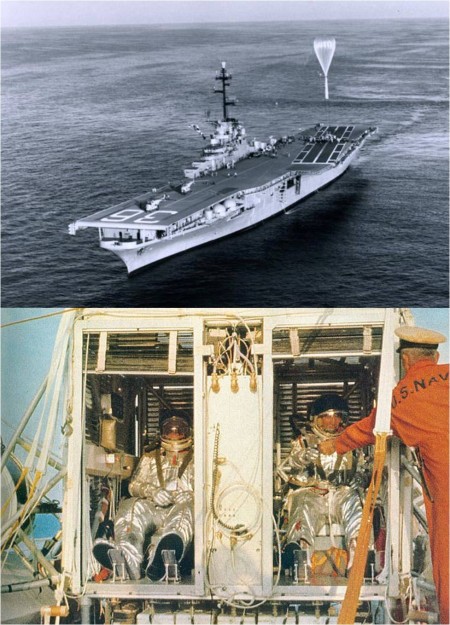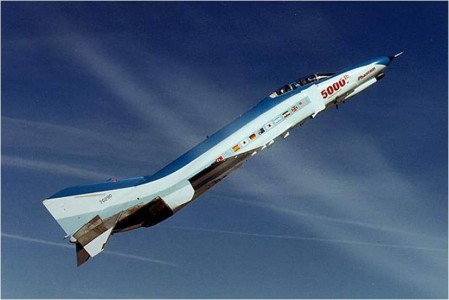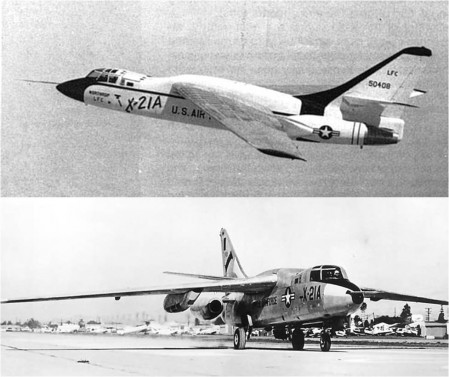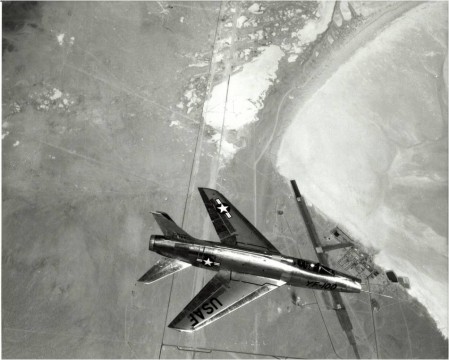
Fifty-one years ago this month, the United States Navy Strato Lab V manned balloon soared to a record altitude of 113,740 feet above the Gulf of Mexico. The crew for this historic flight was Commander Malcolm D. Ross, USNR and Lt Commander Victor G. Prather, USN.
Strato Lab was a United States Navy program to scientifically explore the upper reaches of the stratosphere using manned balloons. An additional focus of the program was the acquisition of aero medical data in support of the United States man-in-space effort.
A total of five (5) Strato Lab balloon flights took place from 1956 to 1961. Each Strato Lab mission was flown by a two-man crew with Malcolm Ross as the flight commander. The Strato Lab I, II, III, and IV aerial excursions attained maximum altitudes between 76,000 and 86,000 feet.
Strato Lab V, which took place on Thursday, 04 May 1961, achieved the highest altitude (113,740 feet) of the program. The purpose of this flight was to perform a maximum test of the Navy’s Mark IV full-pressure suit. As such, Ross and Prather flew in an open gondola with nothing save their individual Mark IV suits providing protection from the space-equivalent environment at high altitude.
Launch took place from the USS Antietam (CV-36) stationed out in the Gulf of Mexico. The size of the Strato Lab V balloon was truly immense. It sported a volume of 10,000 million cubic feet and measured 300 feet in diameter at float altitude. Despite extreme cold and various technical problems, the crew successfully made the trip upstairs in about two and a half hours.
Ross and Prather were sobered by the view they had of earth and space as well as the realization that no person had ever seen either from such a vantage point. They did not linger long before starting the trip home. Descent was largely uneventful. Splashdown occurred within a mile and a half of the USS Antietam. Mission time was 9 hours and 54 minutes.
As they waited for helicopter pick-up, the crew savored their safety, the success of their mission and the outstanding performance of the Mark IV full-pressure suit. Malcolm Ross was the first to be picked-up by the recovery helicopter. With some difficulty, he was safely retrieved from the water-borne Strato Lab V gondola.
Then tragedy struck suddenly and irrevocably as Prather was being hoisted into the helicopter. The naval officer slipped from the retrieval sling and fell into the water. Divers in the helicopter quickly jumped into the ocean in an effort to save Prather. Despite their rapid response, Victor Prather drowned. Ironically, the Mark IV suit, which just hours before had preserved life, now took that life away as it filled rapidly with sea water and dragged Prather below the surface.
For their significant efforts, Ross and Prather (posthumously) were awarded the 1961 Harmon Trophy for Aeronauts. The performance of the Mark IV suit was so outstanding that it served as the basis for the Project Mercury spacesuit. Interestingly, the day after the Strato Lab V mission, USN Commander Alan Bartlett Shepard became the first American in space during the sub-orbital flight of Freedom 7.

Thirty-six years ago this week, production unit No. 5,000 of the incomparable USAF/McDonnell F-4 Phantom II fighter-bomber was delivered in a public ceremony held at Lambert-St. Louis International Airport. This occasion (Wednesday, 24 May 1978) also marked the 20th anniversary of the type’s maiden flight (Saturday, 24 May 1958).
Rhino, Lead Sled, Flying Brick, Flying Anvil, Old Smokey, Double Ugly, The Hammer; such are among the many terms of endearment used by pilots, back seaters and crew chiefs to describe the fabled F-4 Phantom II. Perhaps no other military aircraft is as emblematic of the air warfare mission than this classic two-seater, twin-jet airframe.
Initially developed for the United States Navy, the Phantom was also employed by the U.S. Marine Corps, United States Air Force, and the air forces of many allied nations. As such, it served in numerous air warfare roles including fighter, bomber, attack, interceptor, defense suppression, and aerial reconnaissance. Indeed, over 50 variants of the F-4 were produced between 1958 and 1981.
The aircraft was Mach 2.2-capable with a service ceiling of 60,000 feet. At a GTOW of 41,500 lbs, the Phantom could carry an ordnance load of 18,650 lbs wherein combinations of air-to-air missiles, air-to-ground missiles and a variety of multiple-yield bombs were employed.
The Phantom was conceived in a time when reliance on missiles appeared to obviate the need for cannon in air combat engagegments. Subsequent air warfare experience in Viet Nam dictated otherwise and a centerline-mounted M61 Vulcan cannon was installed on the F-4E variant.
The Phantom was heavily used by the military services in southeast asia and proved to be extremely effective. So much so, that it gained an additional nickname as the “World’s Leading Distributor of MiG Parts”.
In its time, the Phantom also held many speed, altitude, and time-to-climb aircraft performance records. Noteworthy is the fact that the F-4 also holds the distinction of being the only aircraft flown by both the United States Air Force Thunderbirds and United States Navy Blue Angels flight demonstration teams.
Today, there are over 600 Phantoms still flying worldwide. In the United States, one is likely to see a Phantom in its natural element only at an air show. Even in an age when the F-15 Eagle, B-1B Lancer and F-22 Raptor grace the sky, it is a choice experience indeed to witness the mighty F-4 come by show center in full afterburner. Rhinos forever!
From 07-11 May 2012, J. Terry White brought his Aerodynamics For Engineersshort course to Edwards Air Force Base, CA. The training was provided to aerospace professionals from the Air Force Flight Test Center (AFFTC), whose workforce includes roughly 12,800 men and women focused on conducting and supporting research, development, test and evaluation of aerospace systems from concept to combat.

Class Photo
Aerodynamics For Engineers
Air Force Flight Test Center • Edwards AFB, CA
07 – 11 May 2012
The AFE course continues to be in high demand, both at Edwards AFB and elsewhere. It is also the longest-running and most-taught class to date in the WEA curriculum. White was very impressed with the AFFTC course participants, saying, “The class was extremely engaged, asking lots of questions and providing insightful commentary. From an instructor’s standpoint, it was a particularly rewarding experience.”
On the final day of class, students made a special field trip to the AFFTC Museum where White gave a guided tour and discussed the design characteristics of several legendary aircraft. Said one kind student regarding the training experience, “Mr. White has the ability that most experts of his type do not: the ability to actually teach what he knows to others in a way that the average person can follow!” Photos of the course can be found on WEA’s Facebook page.
The WEA team thanks each student who attended this offering of the AFE course and extends special gratitude to Ms. Christine Verdugo – whose continued assistance and support is unmatched.

Forty-nine years ago today, the USAF/Northrop X-21A Laminar Flow Control (LFC) experimental aircraft exhibited a significant reduction in skin friction drag. This achievement marked the first time in aviation history that the LFC principle was successfully demonstrated in flight. Perhaps aviation’s greatest holy grail is the pursuit of technology that allows a laminar boundary layer to be maintianed over the entire surface of an aircraft. Doing so holds the promise of significantly reducing the overall drag and thereby markedly increasing aircraft range and endurance performance. Maintaining a laminar boundary layer is difficult since the boundary layer is naturally turbulent over most of the aircraft at flight Reynolds numbers. The X-21A LFC system was based on the principle of boundary layer removal. This was achieved by drawing surface airflow through a series of fine, porous slots machined into the upper and lower surfaces of the wing. Airflow suction was provided by laminar flow control pumps located in nacelles on the underside of the wing. A pair of existing USAF B-66D Destroyer airframes were converted to the X-21A LFC configuration. Following conversion and checkout, Ship No. 1 (S/N 55-0408) first flew on Thursday, 18 April 1963 with Northrop test pilot Jack Wells doing the honors. On this initial test hop, the X-21A flew from Northrop’s Hawthorne Airport facility to Edwards Air Force Base, California. The first successful flight demonstration of aircraft drag reduction occurred on Tuesday, 14 May 1963. Ultimately, the X-21A demonstrated laminar flow control on about 75% of the type’s wing surface. Aircraft handling was satisfactory even with asymmetric boundary layer state on opposing wings (i.e., one wing with laminar flow and the other with turbulent flow). However, the Achilles Heel of LFC is the natural flight environment itself wherein dust, dirt, particulates and even bugs clog the boundary layer suction slots. LFC system maintenance is a nightmare; laborious, time-consuming and expensive. While clearly successful, the X-21A LFC Program came to an end in 1964. Despite its promise and allure, no operational production aircraft has ever utilized an LFC system.

Fifty-nine years ago this month, the USAF/North American YF-100A Super Sabre air-superiority fighter made its maiden flight with North American test pilot George S. Welch at the controls. During this initial test flight, the Super Sabre exceeded the speed of sound. The North American F-100 Super Sabre was the successor to the fabled F-86 Sabre fighter. The Super Sabre holds the distinction of being the first of the 1950’s era Century Series aircraft. It was also the first USAF production aircraft capable of flying supersonically in level flight. A total of 2,294 copies of the Super Sabre in 18 variants were produced over an operational lifetime that spanned 25 years. The air forces of the United States, France, Denmark, Turkey and the Republic of China (Taiwan) flew the aircraft affectionately known as “The Hun” by its pilots. The YF-100A was the initial version of the F-100. Two copies were produced. Ship No. 1 (S/N 52-5754) first flew on Monday, 25 May 1953 at Edwards Air Force Base, California. The aircraft performed well and hit Mach 1.03 on this first flight. The Super Sabre entered the USAF active inventory in late 1954 and set a number of speed records early in its operational life. The type won the Bendix Trophy for flying 2,020 nm at an average speed of 610.726 mph in September of 1955. The F-100 was also the first USAF combat jet to enter the Vietnam War. The USAF Thunderbirds flew the Super Sabre from 1956 to 1968. In spite of these notable achievements and distinctions, the aircraft was plagued by numerous design deficiencies and shortcomings that had to be corrected before the type reached an acceptable level of maturity. Particularly vexing were roll inertial coupling issues at high speeds and pitch-up tendencies at low speeds. Indeed, the aircraft had a deserved reputation as a widow-maker starting early in its career. History records that 889 F-100 airframes were destroyed in mishaps of one kind or another. That translates to a stunningly-high loss rate of 38.75%. Soberingly, 324 pilots lost their lives flying The Hun. Progress in aviation sometimes comes at a very high price. The F-100 Super Sabre, unique in its day, now a relic of history, is a particularly profound example of this truism.





